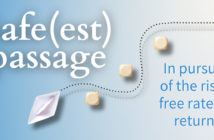Is maximizing leverage the best strategy in today’s market?
At present, commercial real estate investors are facing increasing uncertainty on growth and stagflation. The Federal Reserve has started the tightening process and begun its campaign to raise rates and curb inflationary pressure. The macro-geopolitical issues surrounding the war in Ukraine, as well as the lingering effects of the pandemic, are only adding to this uncertainty. As owners and developers maneuver through these unknowns, knowing when to manage leverage, and the stress of high-leverage debt service on their properties’ future cashflow, will be a critical strategy.
IS MORE ALWAYS MORE?
Conventional wisdom suggests that torquing up a commercial real estate asset to its maximum potential debt is a smart game plan. While a solid play for more normal times, this may not be the most prudent end goal at the moment. Owners and developers are wired to maximize cash-out on their stable assets and then reinvest that monetized value to grow their portfolios. Many have relied on non-recourse CMBS financing as the best and often only way to execute this high leverage strategy. What many borrowers don’t realize, however, is the wider world of options and features available to real estate owners who have added significant value to their assets, want to position their portfolio for the long haul, and don’t want to stress future cash flow by putting on excessive debt. This right-leverage structure is known as a low-level, non-recourse loan. Let’s explore how it can be used effectively.
A NEW LIGHT
CBMS financing often suffers from a bad reputation. Stories from seasoned borrowers that depict the transaction process as full of friction, uncertainty, and re-trades are always circulating. Many owners consider CMBS loans as inflexible, fee-heavy, and a servicing nightmare. They also are put off by the looming threat of cash management, which would allow the lender to control the property’s income if there is disruption in or stress on cash flow. When owners consider a lower-leverage CMBS loan in the 45%-55% of value range, however, a host of attractive, flexible features become available.
When the goal isn’t maximizing cash-out or the loan amount, there’s more room to negotiate. An experienced intermediary may be able to get the lender to extend the loan’s interest-only period and change the prepayment penalty structure from defeasance to yield maintenance. While still connected to prevailing interest rates, yield maintenance is similar to an interest swap breakage fee and simpler and more predictable than defeasance. The need for cash management and lockbox requirements also may be negotiable. This reduces the hard cost of bank fees. On low-leverage transactions, an intermediary also can often give owners more control over their cash by convincing the lender to lower, cap, or fully waive reserves. The lower spread on a low-leverage CMBS loan also translates into a better interest rate for borrowers, typically one full percentage point under higher leverage option. Even CMBS servicing becomes less onerous when leverage is reduced. Loan document language can be adjusted to ensure servicers respond to borrowers’ requests within a reasonable timeframe (i.e., 10 days) and fulfill those requests without charging additional fees.
FINDING FREEDOM
Depending on the time of origination, owners choosing lower leverage also may consider a five- or seven-year loan term, instead of the cookie-cutter 10 years of the majority of higher-leverage CMBS deals. The owner will have the flexibility to recapitalize and pull more cash out or sell the asset sooner than a long-term hold. For example, we are working on closing a seven-year loan with four years of interest-only payments followed by 30-year amortization, yield maintenance pre-payment penalty, and all of the features discussed above, for a portfolio of 13 limited-service hotels. The CMBS loan will be at 52.5% leverage with a debt-yield (NOI/loan amount) of just under 16%. This is a $90-million loan, which at full leverage with no flexibility would be a $108-million loan.
When leverage isn’t pushed out to maximum levels, getting to closing becomes easier for the intermediary and lender. Subsequently, borrowers can expect a smoother transaction with more certainty of execution. While still an important strategy in certain situations, torquing up a commercial real estate asset to its maximum potential isn’t the only route to prudent portfolio management.





